Brooklyn, NY 11217


Charles P. Stevenson Library
Bard College, Annandale-On-Hudson, NY 12504
September 14 - October 12, 2011
Reception, Wednesday, September 14th, 6:00 - 7:30 PM
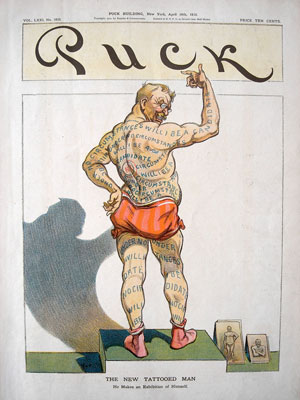
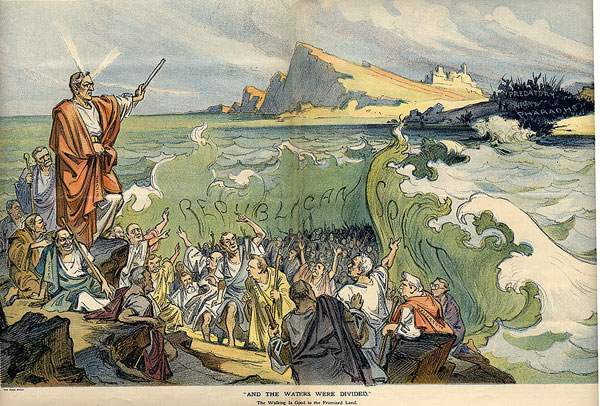
Puck, founded in 1871 by cartoonist Joseph Keppler, was America's leading humor magazine. It was a Democratic publication run after 1902 by Keppler's son, Joseph Keppler Jr., known as Udo. Taking his inspiration from the circus sideshow, Udo recycles a cartoon staple, the tattooed man whose lies and transgressions have been indelibly inked on his body. Here Roosevelt's tattoos condemn him for seeking a third term. Other Puck cartoons were inspired by biblical stories. Udo shows the crossing of the Red Sea with Wilson in the guise of Moses leading the Democrats to the Promised Land as the Republican Party splits between Taft and Roosevelt.
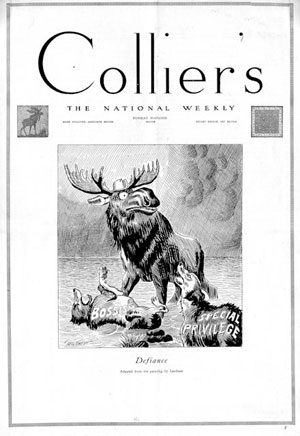
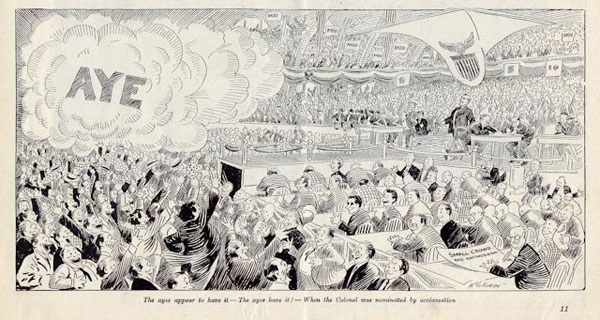
McCutcheon's cartoon chronicle of the Progressive Party Convention in Chicago was commissioned by Collier's, an ardently pro-Roosevelt publication. After the convention, McCutcheon worked with the campaign staff of the Progressive Party creating cartoons distributed for free to papers around the country. Many featured the Party's Bull Moose emblem, the rival of the Republican Elephant, and the Democratic Donkey.
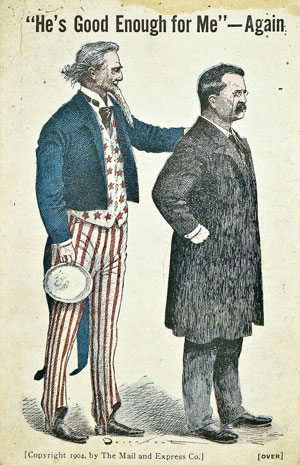
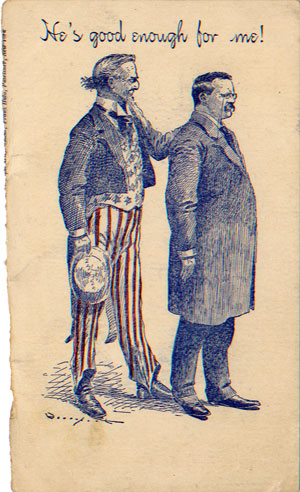
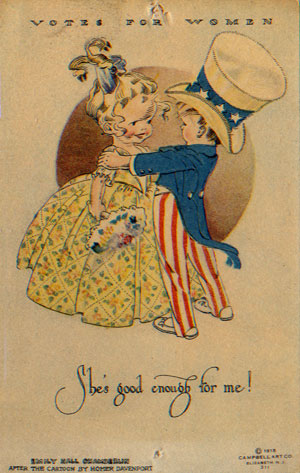
Davenport's "He's Good Enough for Me" was the most famous pro-Roosevelt cartoon from the election of 1904 and in 1912 it was updated by Davenport. Emily Hall Chamberlin's 1915 postcard "She's Good Enough for Me!" cleverly uses Davenport's concept to boost women's suffrage, an important part of Roosevelt's and the Progressive Party's 1912 political platform.
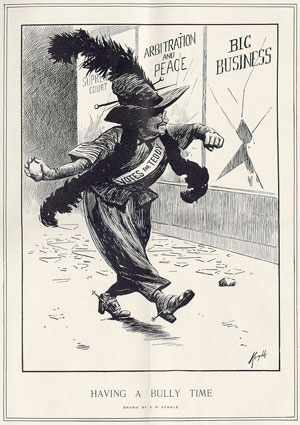
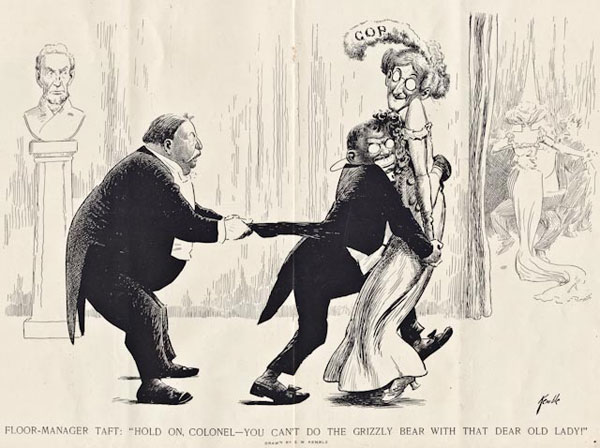
In 1912 Kemble produced a remarkable series of scathing anti-Roosevelt cartoons. One Harper's Weekly cartoon pushes the limits of what is politically correct today with a portrayal of Roosevelt as a cross-dressing, rock-throwing, socialist suffragette. The cartoonist, famous for his racial "Kemble's Coons" cartoons, has also darkened Roosevelt's skin. In a centerfold cartoon, Kemble alludes to the popular vogue for African American dances, sexually suggestive and named after animals.
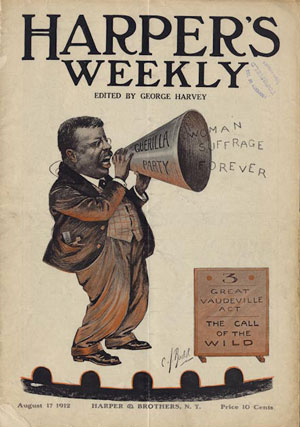
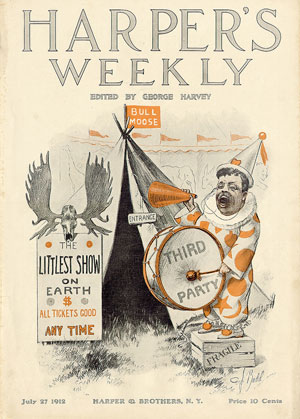
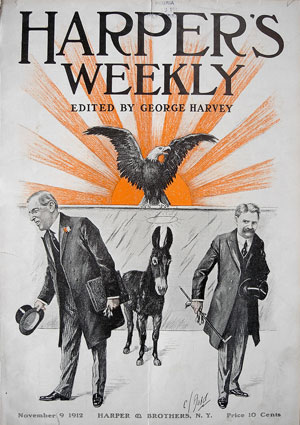
Harper's Weekly backed Roosevelt in the election of 1904 and Taft in 1908, but in 1912 the magazine's new owners switched its allegiance to the Democrat Wilson. Budd's covers unrelentingly ridiculed Roosevelt as a circus clown and a vaudeville barker shouting for "Women's Suffrage." Following the vote the winners Wilson and Marshall took a bow on a Harper's cover. The final tally: Wilson, 6,296,284 (435 Electoral Votes); Roosevelt, 4,122,721 (88 Electoral Votes); Taft, 3,486,242 (8 Electoral Votes).
The Marc H. Miller Collection of Theodore Roosevelt Cartoons consists of tens of thousands of cartoons gathered from old magazines, newspapers and books. It has been assembled by Marc Miller, an art historian, writer and curator with an interest in portraiture and in the telling of history's tales with pictures. Miller's credits include two N.E.H. funded exhibitions and catalogs, Louis Armstrong: A Cultural Legacy (National Portrait Gallery, New Orleans Museum of Art) and Lafayette, Hero of Two Worlds (Philadelphia Historical Society). As curator at the Queens Museum, his responsibilities included the New York World's Fair Archives and Robert Moses' Panorama of the City of New York. Miller is the founder and director of Ephemera Press, where he has published a series of pictorial maps of historic New York neighborhoods illustrated by leading cartoonist. To learn more about the Theodore Roosevelt cartoon collection contact: marc@ephemerapress.com

A visual journey through New York's art and music underground, as experienced by an artist, writer and curator living in the top floor loft at 98 Bowery from 1969–1989.

The online store for the website 98bowery.com featuring original art and ephemera from 1975 to 1985 connected to the artist group COLAB, and the galleries Fashion Moda and ABC No Rio.